
Land Rover Defender 130 (2023-) Review

Introduction
Just when you thought the Land Rover Defender was already a pretty large car, Land Rover made it even bigger. This is the Defender 130, and as keen students of mathematics may already have twigged, it’s bigger than the Defender 90 and 110 models that sit beneath it. So much bigger, in fact, that it’s an eight-seater, with a full-width row of three seats in the boot.
But is that extra capacity really useful, and what effect has it had on the Defender’s driveability and capability? After all, bigger isn’t always better when it comes to cars, and the Defender 110 is already a pretty large thing. So is the Defender 130 a useful addition to the range, or will it be a pointlessly oversized lump that adds nothing but cost and bulk?
Select's rating score* - 4.1 / 5
At a Glance
The ‘new’ Defender has had something of a mixed reception, with some loving the newfound luxury of the model, while others bemoan its lack of utilitarian tradition. But there’s no arguing with its popularity, which has seen it grow to be a big seller as customers flock to its square-jawed good looks and mix of luxury and ruggedness. The 130 model builds on all that – quite literally – with just a larger rear end, and while the design is similar to any other Defender, it kind of suits the size. But it is unquestionably big, and that won’t be to everyone’s taste.
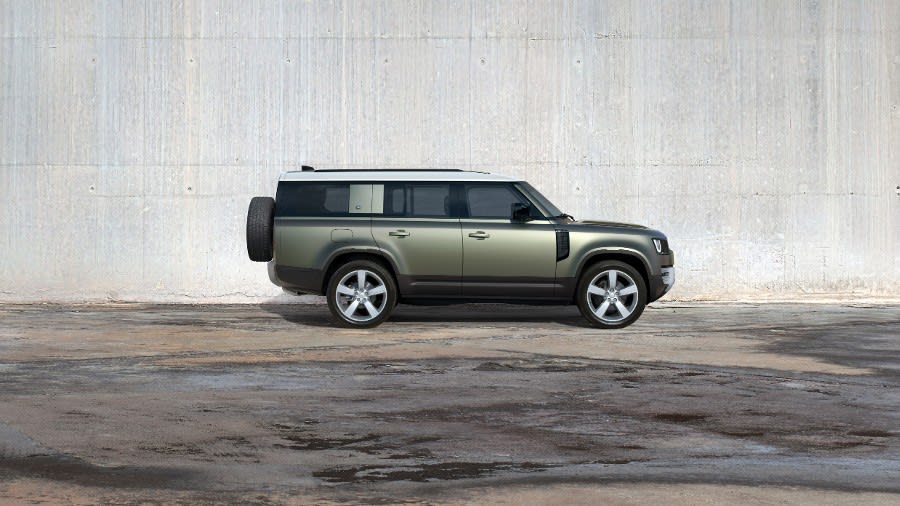
It does at least mean there’s plenty of space inside, and this is a genuine eight-seater. A tall adult may not have much fun on the centre rear seat, but there is space enough for children or adults on short journeys. You might just have to pack the car carefully. Boot space is good, too, no matter whether the seats are in use or not.
And there’s a choice of powerful engines, with the 3.0-litre straight-six diesel joined by the 3.0-litre six-cylinder petrol and the massive 5.0-litre V8 petrol options. The diesel, which wears the D300 badge, is the obvious choice for anyone who isn’t an oil sheikh, because it’s the only one that achieves even remotely acceptable fuel economy.
It gives the 130 plenty of punch, too, and though the car isn’t sporty in any way, it makes decent progress when it gets into its stride. It has a loping kind of gait to it, too, which means it’s mostly comfortable on long drives, but it’s still unstoppable off-road. Admittedly, the shorter 110 will deal with some aspects of all-terrain driving slightly better, but the difference is marginal.
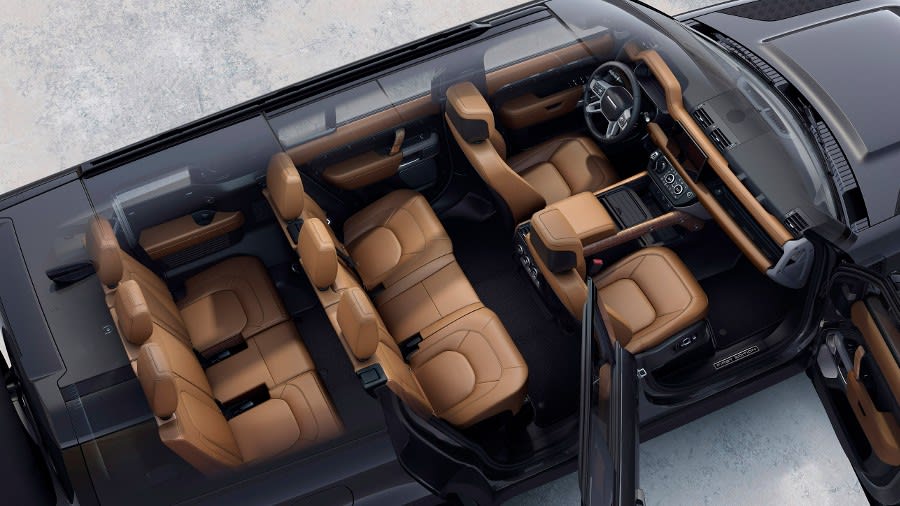
Key Features
The main reason for choosing a Defender over any other big SUV is its off-road capability, and the new model still has plenty of that. It may be more civilised inside, but the latest-generation Defenders get all sorts of tech to help them tackle every type of terrain imaginable. From clever traction control systems to hill descent control, which helps keep the speed in check on slippery downslopes, the Defender is hugely capable over rugged terrain. It’ll wade through streams, climb hills and conquer deserts with no trouble at all, so a muddy field or a bit of snow shouldn’t be an issue – assuming you fit the right tyres, of course.

The reason for choosing the Defender 130 over its shorter siblings, however, is practicality. The 130 is a big car, but that means it has loads of space inside, and there are eight seats in there. Now, we don’t mean eight seats in the way some cars ambitiously claim to carry seven, here. You could easily carry six children across the six rearmost seats, and while adults might be a bit cramped in the rearmost centre seat, the other five would be fine – at least on a short-to-medium-length journey.
And then there’s the boot space itself. With all eight seats in place, it’s kind of acceptable, but if you fold the rear row down it suddenly becomes cavernous. Customers won’t have any trouble at all fitting things into the boot, and there’s always the option of a roof rack and a trailer if you’re really struggling.
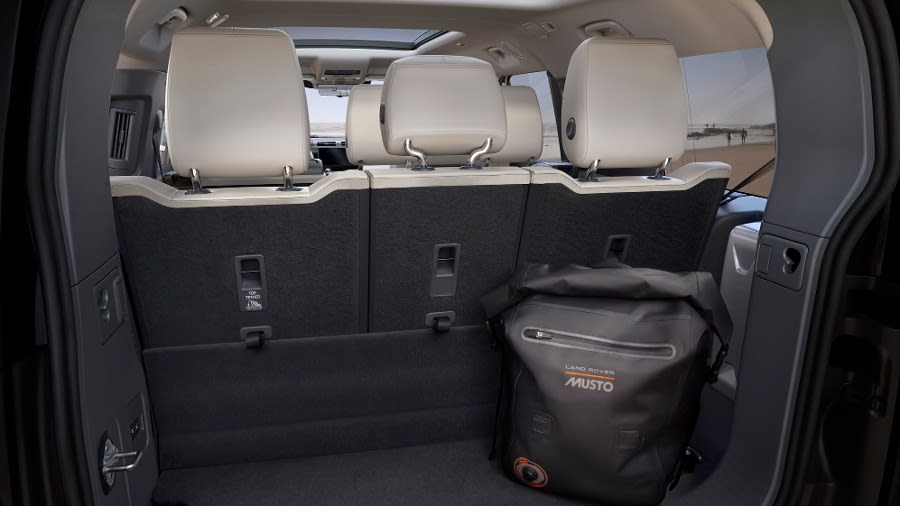
Performance & Drive
The Defender 130 has a narrower choice of engines than some other Defender models, perhaps because it has a heavier body to lug around. So the choice is a pretty simple one, with only one diesel – the 3.0-litre D300 – and a choice of three petrol engines: the 2.0-litre P300, 3.0-litre P400 and 5.0-litre P500.
Admittedly, the diesel is the least powerful choice, with just 300hp, but it provides the best balance of performance and economy, managing to get from 0-62mph in less than eight seconds, and return more than 30mpg on the official economy test. While the more powerful petrol versions provide more dramatic acceleration, they can’t match the diesel for efficiency.
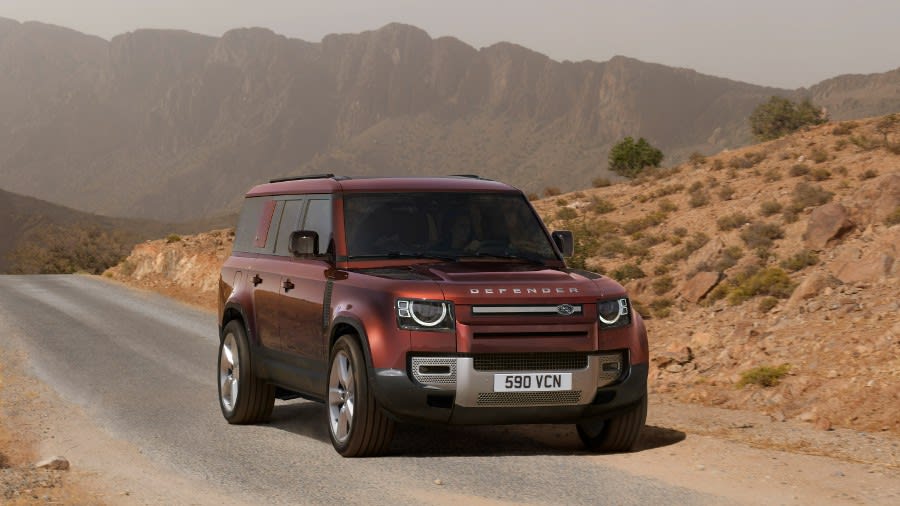
The catch is a slightly lethargic feeling when you hit the pedal on the right. All Defender 130s are automatics — eight-speed autos, to be precise — and the D300 diesel takes a little time to sort itself out before finally girding its loins. That’s only the case from low speeds or from a standstill, though, and it feels surprisingly perky once you’re up to speed. Overtaking is easy enough, although you’ll need a wide road, because the 130 always feels big and heavy — markedly more so than the 110.
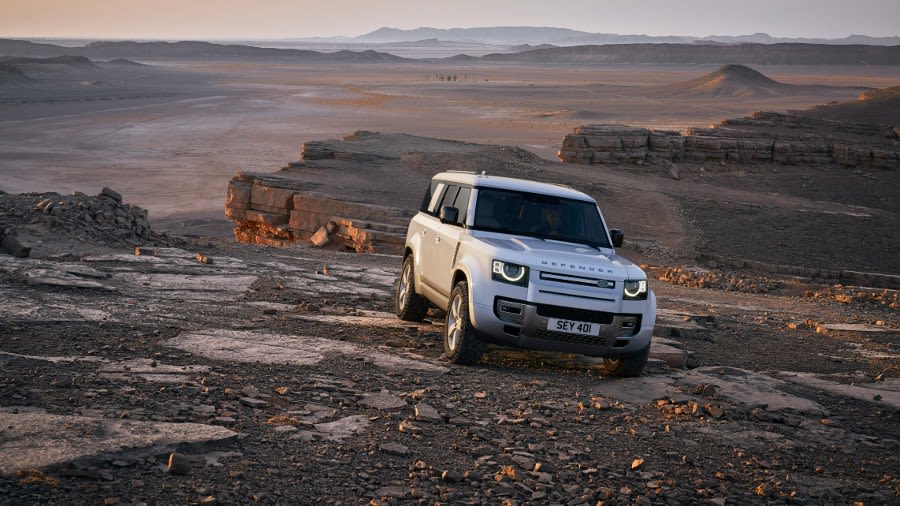
That makes manoeuvring around town a bit of a challenge at times, and the 130 will always feel like a beast of burden. It lopes down the road, leaning noticeably in corners and generally feeling quite lumpen, although the steering is fairly light. The ride feels a little agricultural at times, too, but big tyres and plenty of suspension travel mean it’s generally quite a comfortable thing. To be fair to Land Rover, the company has done quite a good job of keeping such a massive, aerodynamically challenged car in check, but the engineers can only do so much to counteract physics.
Happily, the 130 doesn’t need to counter physics so much when it’s off the road. Like all Defenders, it has legendary capability on the rough stuff, and it feels almost unstoppable. It’ll climb the same hills and ford the same streams as the 110, although the extra length will be worth keeping in mind on some steep slopes. You don’t want to scrape that rear bumper on a boulder.
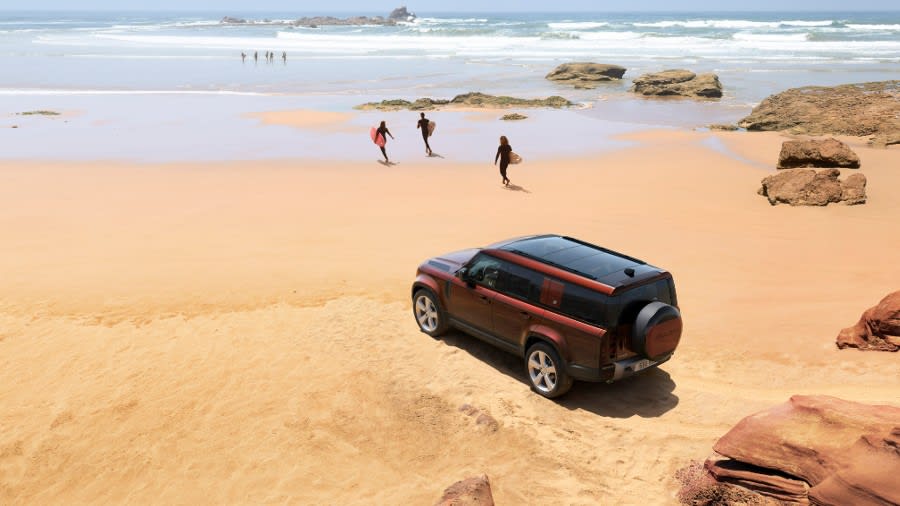
Running Costs & Emissions
None of the engines available for the 130 is likely to be especially efficient, but the diesel is certainly the one to go for. It may not be especially rapid, but you’re still talking about something in the region of 30mpg on a long run, simply because there’s so much weight to haul about and all that weight is housed in such an aerodynamically disastrous shape. But 30mpg isn’t so bad for a car such as this, and it’s certainly much better than you’ll manage from the petrol engines.
Without hybrid options, it seems unlikely many customers will choose the Defender 130 as a company car, either. Even the diesels will incur the highest rate of Benefit-in-Kind tax, so there’s really no cheap way of running one of these vehicles.
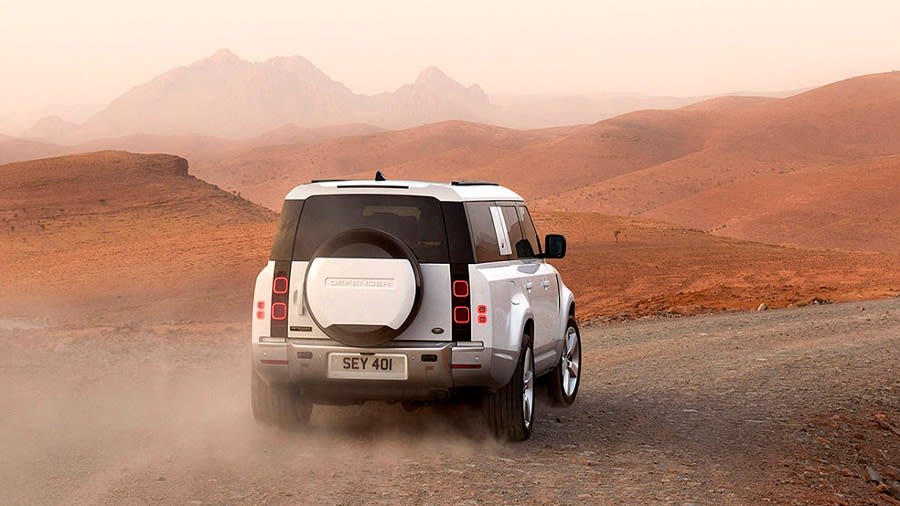
Interior & Technology
From the front seats, the Defender 130 is identical to any other Defender, with the same basic dashboard and cabin design – there’s just more of it further back. Whatever, the view out of the front is the same, with the same skeletal and utilitarian dashboard design, including the high-set gear lever and chunky switchgear forward of the centre console. There’s the same massive central touchscreen, too, and the same digital instrument display.
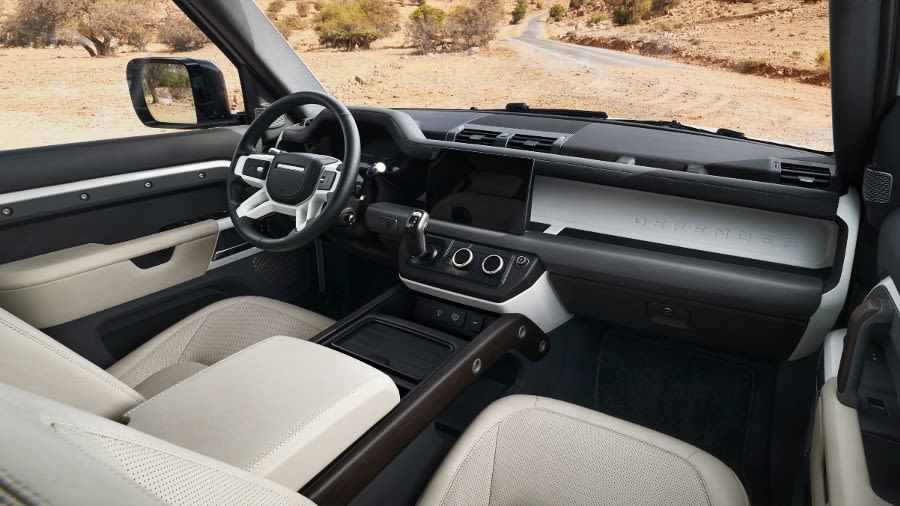
Overall, the look tries to hark back to the old Defender’s roots, while also adding some of the modern luxury customers expect from a Land Rover. This is the company that brought us the Range Rover, after all. To that end, there are some premium materials, but Land Rover has tried to evoke some robust chunkiness with the design, exposed screw heads and floors you can mop clean.
Yet despite that, the technology is Land Rover’s latest. The touchscreen, for example, feels fresh and sharp, although some of the icons are hard to spot unless it’s in dark mode, and the instrument display is clear and configurable. Admittedly, some of the tech feels a bit hesitant at times, and the switchgear on the steering wheel is a bit of a let-down, but it mostly feels robust and modern all at once.
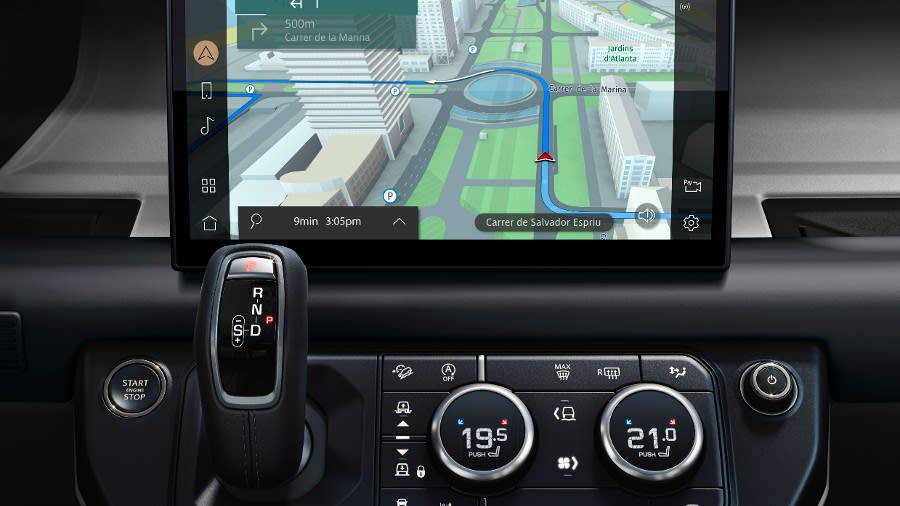
Practicality & Boot Space
Naturally, the whole point of the Defender 130 is space, so it’s a good job there’s plenty of that in there. For those in the front, it feels much like any other Defender – no surprises there – but further back things begin to change. Those in the middle row of seats get three usable chairs that allow three adults to sit relatively comfortably, with plenty of head- and legroom. But the big advantage is in the rear seats, where there’s more than enough legroom for even adults to get comfortable, and there’s a second middle seat. That brings the total to eight, and while adults won’t want to use the back seats for too long and won’t want to use the middle seat at all, it will be more than feasible to put three kids back there. Even on an hour-long jaunt.
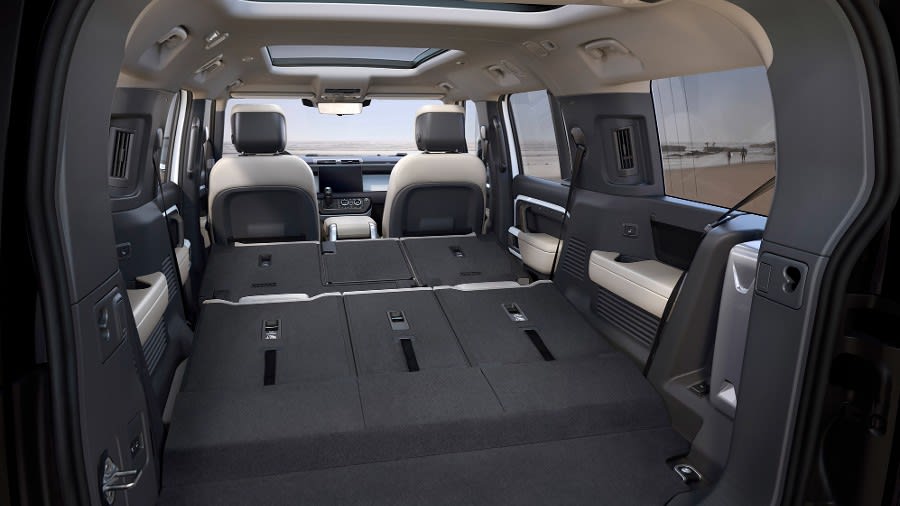
If you don’t want to use the rearmost seats, however, you can fold them down. It isn’t ideal, because that leaves a kind of step in the boot floor, but it turns an acceptably sized load space into something enormous. At 290 litres with all eight seats in place, the Defender’s boot is roughly comparable with that of a compact hatchback – think Hyundai i20 or something like that – but when you fold the back three down, you get more than 1,000 litres of space. That’s as much as you get in some cars with all the rear seats folded. And of course, you can still drop the middle row to free up a further 800 litres or so. That’s the sort of space you get from small vans, let alone 4x4s.
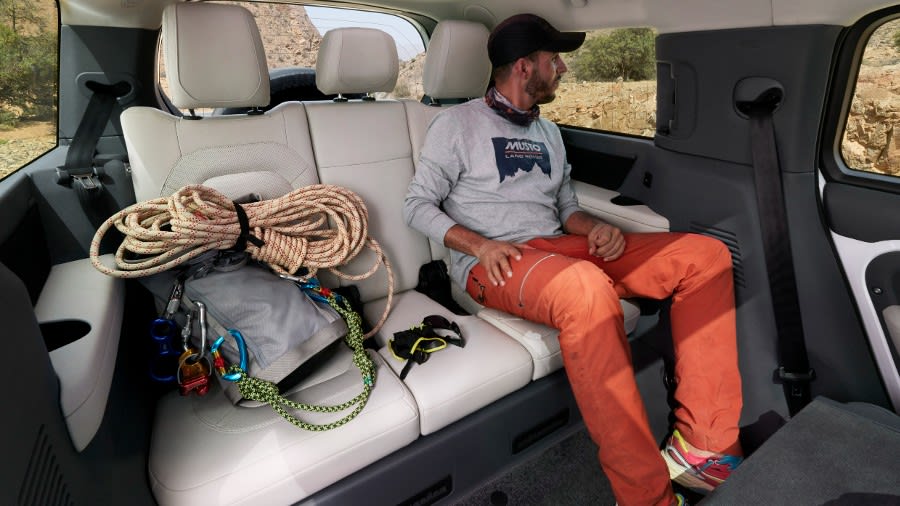
Safety
Euro NCAP hasn’t yet crash-tested the Defender 130, but it has tested the 110, which is mechanically very similar and has much the same body forward of the front seats. That car achieved a solid five-star rating when it was tested in 2020, and although it didn’t score especially well in any one area, strong scores across the board ensured it was deemed strong enough for the full five stars. Because the 130 is so similar, it would likely perform just as well were it to undergo the same tests.
Hopefully, though, customers will never have to put any of this to the test for themselves, because the Defender comes with plenty of driver assistance tech intended to prevent accidents from happening at all. Autonomous emergency braking, for example, can slow or even stop the car if the on-board computers detect a hazard the driver has missed. And gadgets such as lane departure warning and blind-spot monitoring can act as a safety net in case the driver’s attention wanders, or simply help them make better decisions on the road.
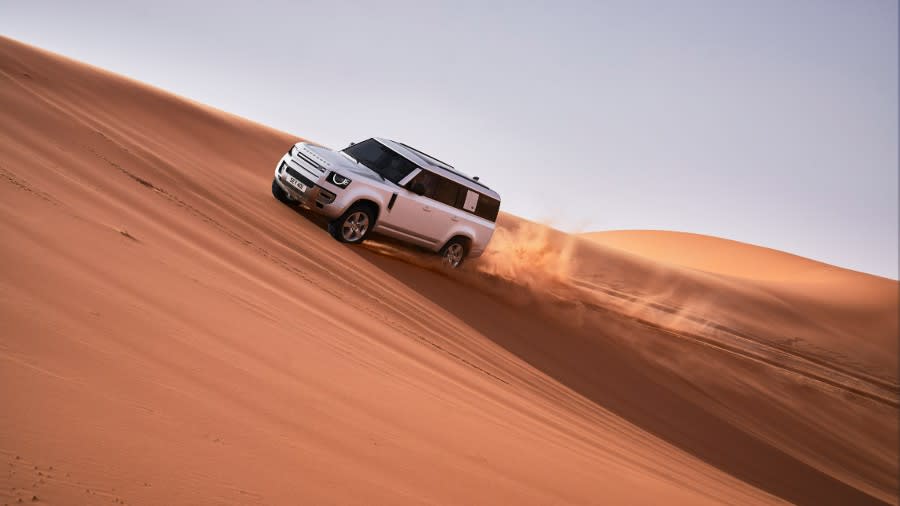
Options
There’s a large and slightly confusing choice of Defender 130 models available, with X-Dynamic SE and HSE models available alongside the ‘standard’ HSE. There’s also an Outbound model, and Defender X models, as well as the Defender V8 that comes with that 5.0-litre P500 engine.
All of the options come with 20-inch alloy wheels, leather (or at least part-leather) upholstery and a Meridian sound system, although the V8 gets 22-inch rims. Satellite navigation, a rear-view camera and climate control are all included, too, while the X-Dynamic SE models also get 12-way adjustable front seats, as opposed to the 14-way adjustable seats in HSE, X-Dynamic HSE, Outbound and Defender X models, as well as the V8.
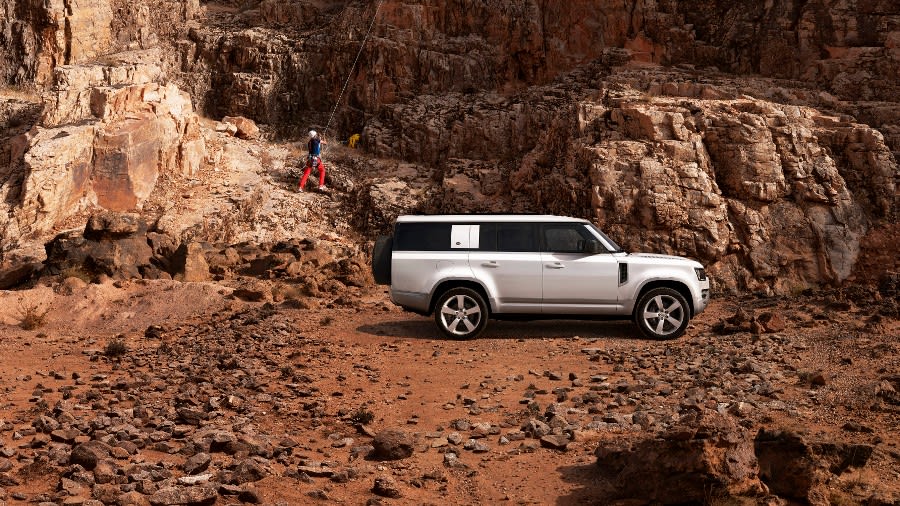
X-Dynamic SE and X-Dynamic HSE models are also set apart by their dark exterior finishes, with Satin Dark Grey alloy wheels, although customisation options are almost boundless, with lots of accessory packs and details on offer. Customers can choose the Explorer Pack, for example, which adds mud flaps, a snorkel-style raised air intake and a roof rack, as well as a ‘pannier’ mounted on the side of the vehicle.
That’s in addition to all the usual choices of wheel designs, paint colours and accessories ordinarily available with Land Rover products. We’d recommend spending some time on the configurator to work out which car you want before sorting out your lease deal.
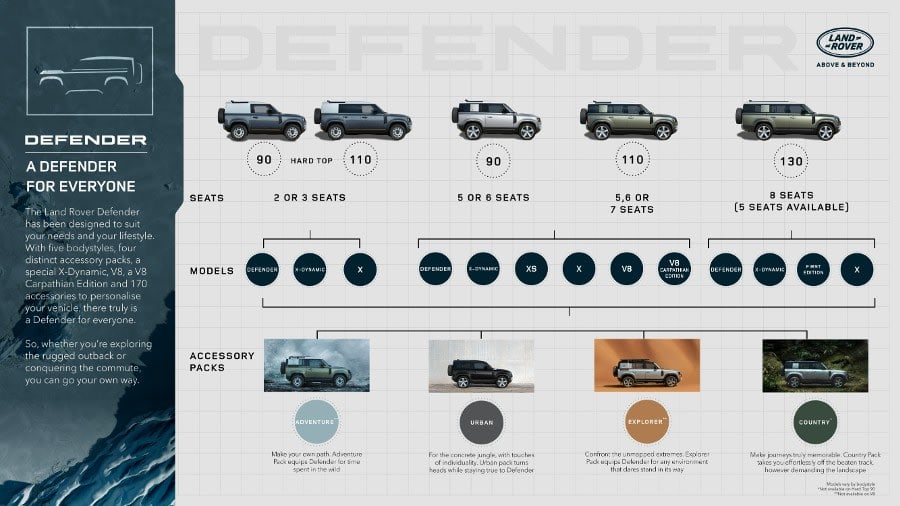
Rival Cars
Proper rivals for the Defender are hard to come by, no matter which version you choose, but the 130 is remarkably lonely when it comes to competitors. The Jeep doesn’t offer a Wrangler with this many seats, and though there’s a new Land Cruiser on the way, that is expected to be more of a 110 rival than a 130-killer.
But for those choosing a Defender on the grounds of space, rather than capability, the options are significantly more interesting. You could even go as far as choosing a Ford Transit Custom Trail, if boot space is your bag, but there are countless other van-based options that make fitting alternatives. There’s the Toyota Proace, for example, and the Citroen SpaceTourer. Neither has the off-road capability of the Defender, of course, but if you want this kind of space, that’s where you’re going to have to look.
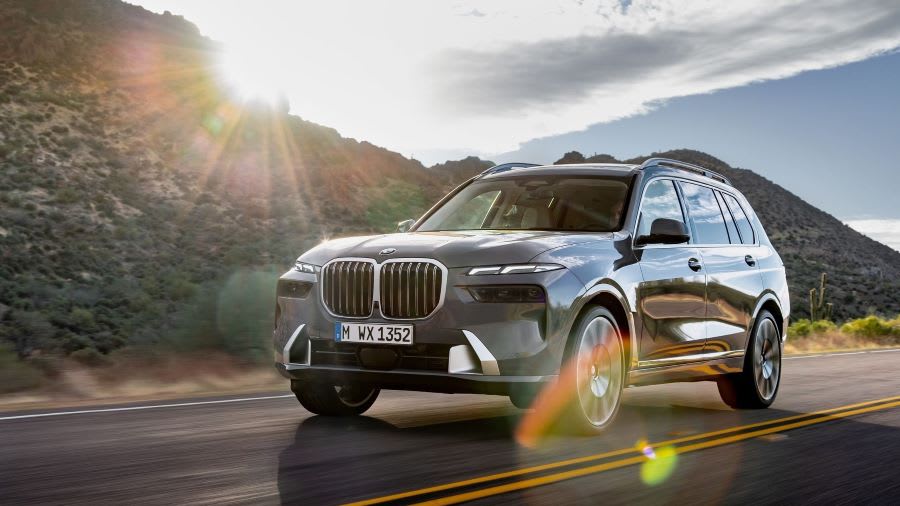
If you’re more into the luxury SUV kind of thing, however, the Genesis GV80 offers a surprising amount of rear passenger space, and there’s always the BMW X7 (above), although neither of those cars will be quite up to the Defender’s brilliance when it comes to off-roading.
If that’s your thing, the closest option might well be the Mercedes-Benz G-Class. Boxy, yet less boxy than before, it’s one of those cars that’s used by posers but really does have the capability to back up its image. The G-Class is, however, currently unavailable to lease in the UK.
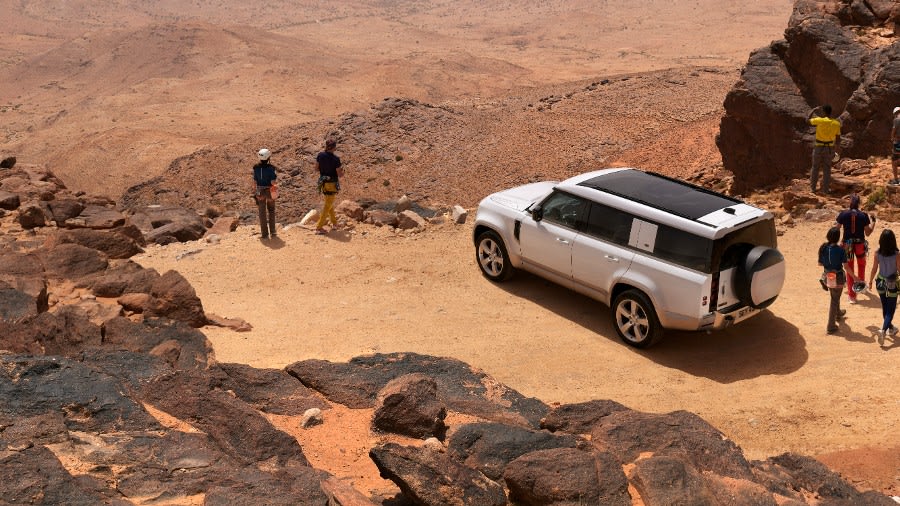
Verdict & Next Steps
Realistically, there’s no great need for the Defender 130 to exist. It’s massive to the point of being awkward, and it’s little more practical than the 110 in terms of passenger-carrying capability. But if you need the extra boot space and/or extra seat, the 130 isn’t a total loss. Yes, it’s a bit ungainly around town, but it’s fine in the cruise and it’s still impressive off-road, if slightly less unstoppable than a Defender 110. It also has the same knack of being appealing, luxurious and utilitarian all at once, which is something only a Defender, it seems, can truly achieve.
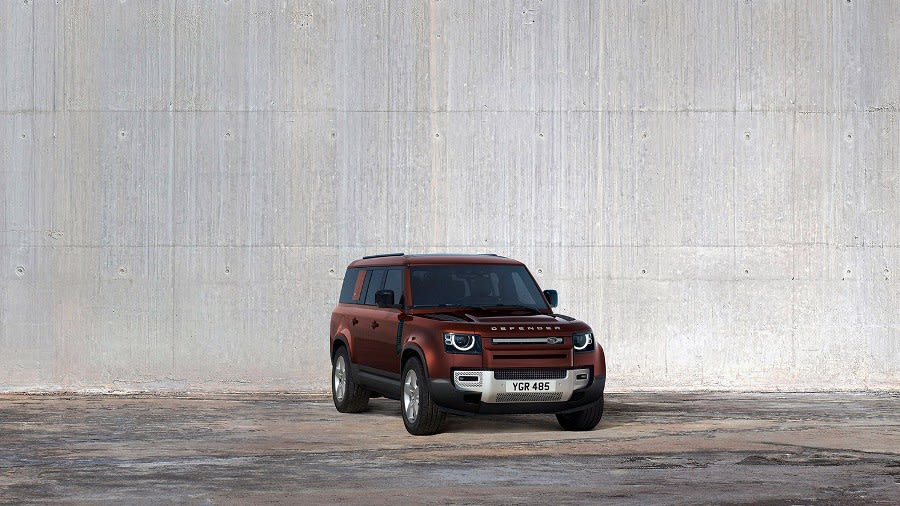
Where to next?
View latest Land Rover Defender deals - from just £633 per month inc VAT**.
Call us on 0118 3048 688 or hit the green 'Enquire' button for more details.
Looking for a great leasing deal? Check out our incredible range of Special Offers and Lease Deals.
New SUV? Read our latest Car Reviews and find the right model for you.
Want to know more about leasing? Take a look at our comprehensive Leasing Guides.
Interested in everything motoring? Why not catch up on all the latest Car Leasing News.
**Score based on Select’s unique meta score analysis, taking into account the UK’s top leading independent car website reviews of the Land Rover Defender 130
**Correct as of 30/11/2023. Based on 9 months initial payment, 5,000 miles annually, over a 48 month lease. Initial payment equivalent to 9 monthly payments, or £5,704.56 (Plus admin fee) Ts and Cs apply. Credit is subject to status.



















